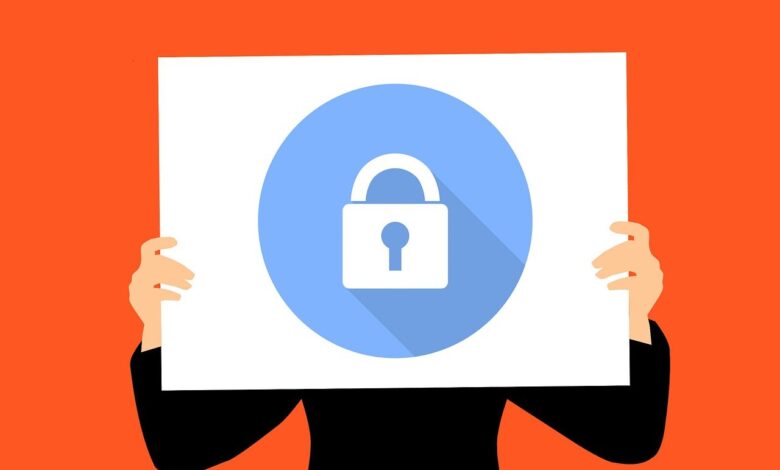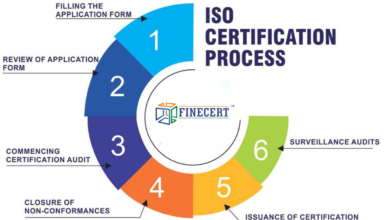How To Implement International Standards Of Information Security In Your Business?

A reliable information security program is a critical component for all businesses in the digital age. With evolving times, the rate of data breaches and security incidents are amplifying exponentially. An organization without a security program can face prominent threats to customers and data. Know the vital aspects related to an information security program. Find a step-by-step guide to implement it at your organization.
ISO 27001 is the globally-accepted standard for information security management systems or ISMS. ISO 27001 framework defines the critical requirements for ISMS. The global standardization framework provides the ideal techniques for companies of any size and belonging to all sectors. Find optimal solutions for establishing, implementing, maintaining, and continually enhancing the ISMS or information security management system in the organization.
ISO compliance – Complying with the standards of ISO 27001 exhibits that an organization or business has established a reliable information management system for risks related to data security. The data could be owned or handled by the company. The robust system must follow the best practices and principles, adhering to the ISO standards and norms.
The ISMS or information security programs must tick the following criteria –
- Establish a high-quality management benchmark for data security
- Monitor and measure the system against that benchmark
- Ensure the best decision-making
- Support and facilitate the execution of decisions
Essentiality of information security – ISO 27001
Undoubtedly, the increasing rate of cybercrime is alarming! The constant emergence of new threats makes it challenging for organizations. It may appear impossible to tackle and manage the cyber risks. With ISO 27001, all organizations can become risk-aware. The framework helps a company become aware and proactive in the process of identifying and addressing its shortcomings. ISO 27001 promotes a comprehensive solution with a holistic approach to information security.
Steps to implement ISMS – Information security management system
Step 1 – Develop an Information Security Team
The first step in the information security program is to make a critical decision about team development. The executive team necessitates senior-level associates for defining the mission and goals of the security program. They are also responsible for developing the security policies, risk management techniques, and more. Apart from the senior executives, there must be executives for daily security operations.
Step 2 – Inventory and asset management
The first task of the security team is to recognize the essential assets and their status. Note the details of the assets and their location. With lucid information, it gets easy to secure them properly. One can streamline the process with sensitive data, from hardware and devices. Obtain clear information on the databases, shared folders, and more. With a ready list of assets, assign the responsibilities and ensure systematic management.
Step 3 – Risk evaluation and analysis
While assessing the risks and analyzing the existing risk management plan, you consider the threats and vulnerabilities. Enlist the potential threats to the organization’s assets for a systematic overview. Rate the potential threats based on their impact. Review the vulnerabilities within the organization, and categorize and rank them on potential impact.
Step 4 – Risk management
Ranking and categorizing the risks is a vital stage for the ISMS implementation. After ranking the risks, decide if you want to reduce, shift, accept, or ignore any of the risks.
- Reducing the risk – Identify the risks and define the solutions to counter the risk. For instance, it could be setting up a firewall, establishing local or backup locations, etc.
- Transfer the risk – Purchasing cyber insurance for assets is a prudent decision. It can help you transfer the risk management responsibility wisely without compromising the solution quality. Find a suitable third party to manage the risks.
- Accepting the risk – It may not always be a cost-effective decision to execute the risk management plan. In such times, the only solution is to accept the risk without implementing the management strategy.
- Avoiding the risk – Staying proactive with the risk possibilities with an analytical approach helps in avoiding the risks like a pro. Ensure a hassle-free risk avoidance plan.
Step 5 – Develop an incident management plan and disaster recovery strategy
Without a robust Incident Management and Disaster Recovery Plan, an organization can never mitigate the risks. It is an essential part and every company must prepare for security incidents or natural disasters. It may be power outages, IT system crashes, cyber hacking, supply chain issues, and even a pandemic, like the recent one! A robust plan identifies the incidents and defines the best actions for data recovery and IT system management.
Step 6 – Inventory and third-party management
Enlist the vendors, suppliers, and third parties with access to the organization’s data or systems. Prioritize the list depending on the data sensitivity. Once identified, review the best security measures related to the high-risk third parties and mandate the essential controls. Ensure the best monitoring and optimal maintenance with an updated list of all third-party vendors.
Step 7 – Apply Security Controls
After risk identification, it is essential to define the measures. These risk controls help mitigate or eliminate the possibilities of risks. It could be technical as well, including – encryption, intrusion detection software applications, antivirus applications, firewalls, etc. It can be non-technical including risk management policies, procedures, etc.
Step 8 – Security awareness and training
One of the most essential parts is to conduct frequent security awareness training. Why? Because it helps share critical information about the security plan. It also revises and reminds the responsibilities of every employee. The evolved security measures and policies become effective only when the employees working with the data are aware of the new norms for risk mitigation and management. Any time the security program receives an update, inform the employees with awareness training to ensure the best operational solution in the long run.
Step 9 – Audit the system
Ensure the effectiveness of your information security program with the assistance of a third-party auditor. They offer an unbiased report with their end-to-end assessment solution. Recognize the security gaps and confirm compliance. Obtain accurate reports on vulnerability assessments, developing a robust ISMS.
Stay informed to make the best choice.
Now you know the critical aspects that matter significantly for ISMS development and implementation. Find the most efficient team of auditors with IRQS for ensuring end-to-end solutions for ISO internal audit. Make the best selection by staying informed about the essentials.






